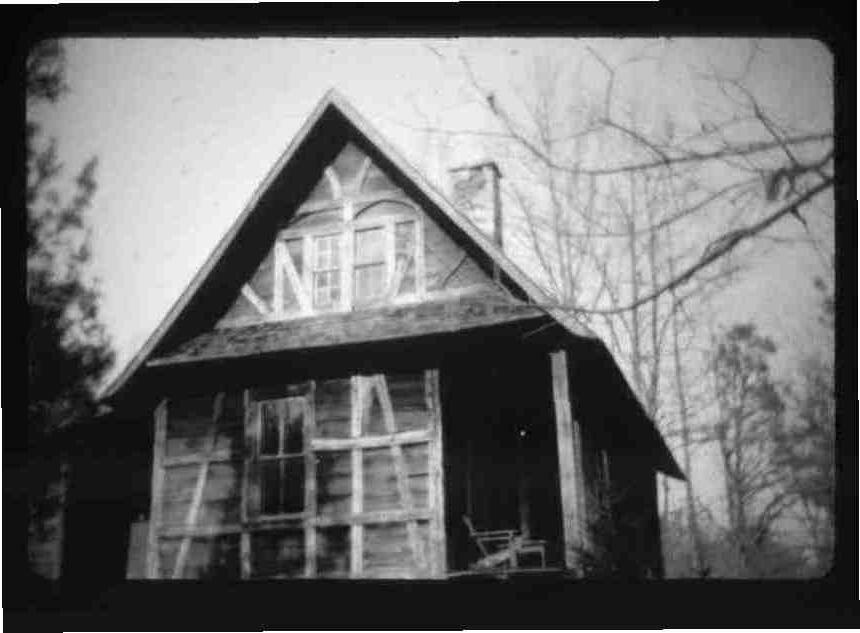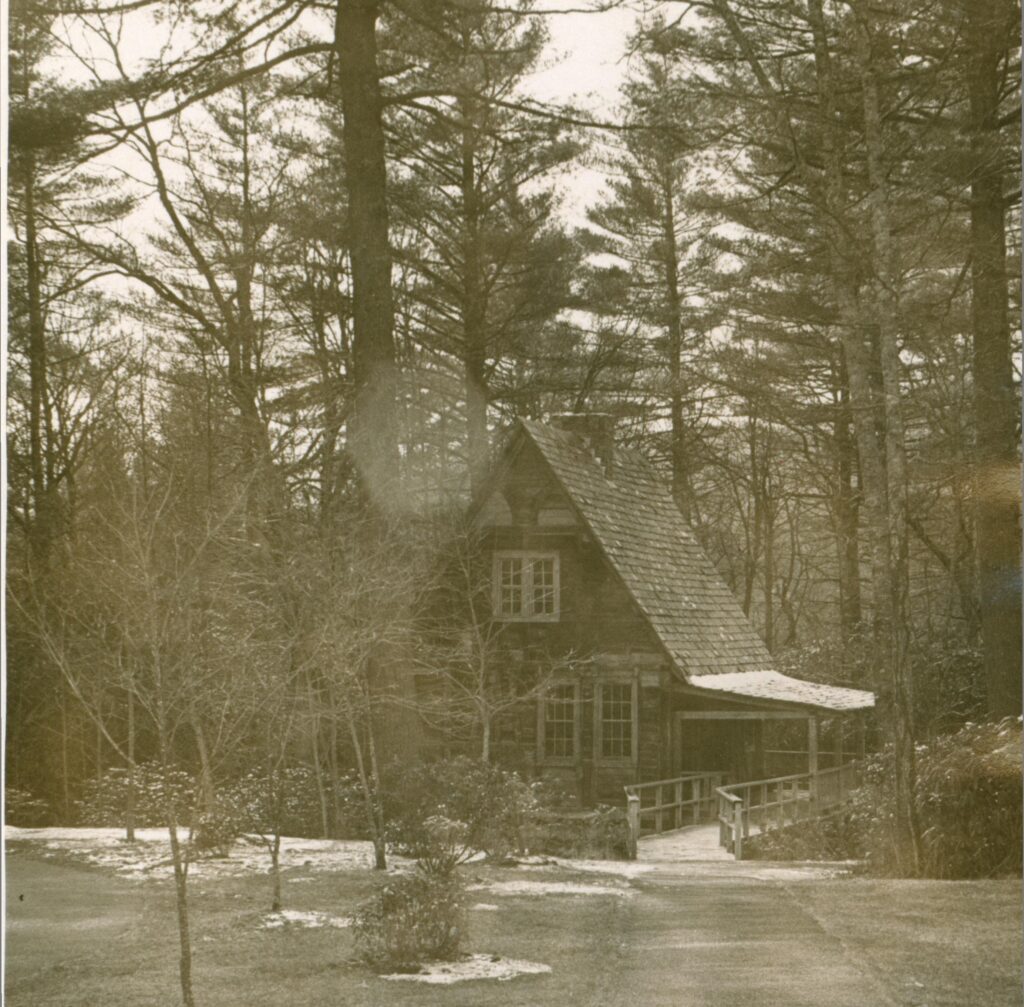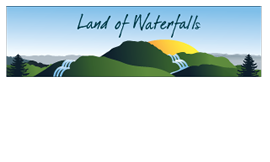
When Carl Schenck created the first forestry school in America in the Pisgah Forest, Biltmore Forest School (BFS), he managed the 100,000-acre tract owned by George Vanderbilt with the precision characteristic of his German identity. The positive impact that forestry had on the local economy cannot be denied; however, the way in which Vanderbilt and his representatives acquired the land in the Pisgah Forest has been interpreted as either a wonderful boon to the area or a tragic loss of family lands and history, depending on who’s telling the story. One way that this dynamic played out can be seen in the construction of Black Forest lodges that was directed by Schenck.
It may surprise current Transylvanians to learn that what is now enjoyed as public lands and a recreational forest was at one time the location of homes and private property for early European settlers. Homes, farms, and even a school occupied the lands in Pisgah National Forest that we now enjoy for fishing, hiking, biking and more. When George Vanderbilt came to the area and sought to acquire his vast land holdings, it was unfortunately sometimes at the expense of the residents who had carved out community in the unforgiving, rustic land. Times were hard, and many found it difficult if not impossible to refuse selling their land in order to survive in an increasingly challenging economy.
One can only imagine how difficult it must have been for settlers who hewed timber by hand and constructed homes for their families to then sell those homes and leave them abandoned. When BFS students came to stay, Schenck did not initially provide any housing for these students – he merely told them to “find yourself a place to stay,” which to many meant occupying the abandoned homes remaining. These students were often from wealthy families, as evidenced by the high price of tuition to attend. Perhaps the difference in their upbringing is what inspired them to give these homes nicknames like “Little Hell Hole” or the ironic “The Palace”, when those same dwellings would have been appreciated as cozy homesteads for many Transylvanians during that time.
Despite selling their land and family homes, many Transylvania settlers still felt they had legacy ownership and the right to hunt, fish, pasture livestock, and cut timber on lands they’d been utilizing for years. Schenck reported the “trespassers” to Vanderbilt and suggested hiring more foresters to not only manage the land for timber production, but to enforce its status as private property belonging to Vanderbilt.
In order to accomplish this, Schenck arranged for the construction of 14 Black-Forest style lodges. On the south fork of the Mills River, two heavy timer-frame houses were built near Turkey Pen Gap, also known as upper Barnwell place for a cost of $500, equivalent to about $18,000 in 2023. Some historians speculate that they were the most valuable buildings in the area at that time. These two-story, multi-room houses were built of chestnut wood, which was abundant at that time. Schenck had them built in the style of houses in Germany, leading to the buildings being collectively called the “Black Forest Lodges”.

Over time, many of these lodges were demolished or otherwise disappeared until only two remained. Known as “Rock House Creek Lodge” and “Cantrell Creek Lodge,” both lodges are now on the Cradle of Forestry site as part of their interpretive trails and were relocated to centralize the experience for visitors and protect the outlying buildings from vandals. Rock House Creek Lodge was originally located at the headwaters of the Davidson River and was trucked and placed on the site of another Black Forest Lodge 1967. Roads had to be built to facilitate the move. The Cantrell Creek Lodge was moved from the Turkey Pen Gap area in February of 1978 by being disassembled, flown via helicopter to the Cradle of Forestry campus, and then reassembled. The work was mostly carried out by members of the Young Adult Conservation Corps (YACC).
After relocation, Cantrell Creek Lodge was dedicated on May 12, 1979. The relocation was made possible by a former Biltmore Forest School student, Verne Rhodes, who was a 1906 graduate. After years working in the field, he became the first supervisor of the Pisgah National Forest and served from 1912-1925. He moved on to higher levels of national service in forestry, but retained a fondness for his time in Transylvania County and even organized the alumni association for BFS graduates. It was Rhodes who coined the term “The Cradle of Forestry in America” to describe the Pink Beds area where the Biltmore Forest School began.
During its lifespan, Biltmore Forest School (1898-1913) produced 360 graduates who became key players in the US Forest Service, state forestry agencies, leading academic programs, and major lumber companies. These lodges are a reminder of the many interconnected events that led to their construction.
Photographs and information for this column are provided by the Rowell Bosse North Carolina Room, Transylvania County Library. This article was written by Local History Librarian Laura Sperry. Sources available upon request. For more information, comments, or suggestions, contact NC Room staff at [email protected] or 828-884-1820.



